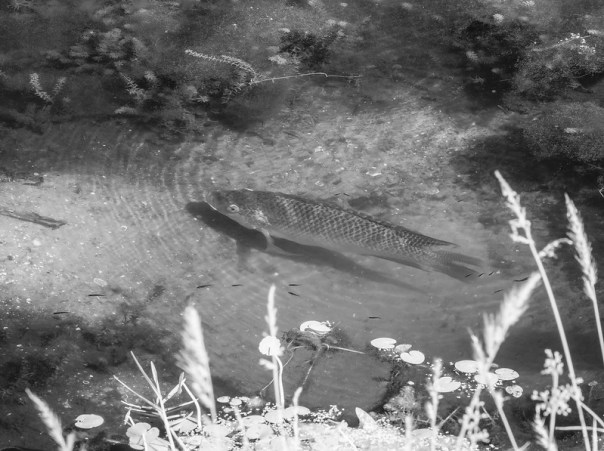The sky wasn’t very promising on our way over to Merritt Island National Wildlife Refuge last week. There were no clouds and we didn’t think the morning color would be any good. Since it didn’t seem like we had a lot to lose, we decided to try a new sunrise spot: Loughman Lake, on the south side of SR 46 just west of Mims.
 Misty Palms. Olympus High Res mode, converted to B&W. ISO 200, 3.2 sec. @ f/6.3, 200 mm eq. (cropped to ~250mm eq.). 6:16 am.
Misty Palms. Olympus High Res mode, converted to B&W. ISO 200, 3.2 sec. @ f/6.3, 200 mm eq. (cropped to ~250mm eq.). 6:16 am.
We were right – at first. There was hardly any color and I ended up converting this first image to black and white. But there was some photogenic fog and around 15 minutes later, the color arrived along with a few clouds on the horizon.
 Misty Dawn. Olympus High Res mode, two frame stitched panorama. ISO 200, 1/6 sec. @ f/6.3, 150 mm eq. 6:28 am
Misty Dawn. Olympus High Res mode, two frame stitched panorama. ISO 200, 1/6 sec. @ f/6.3, 150 mm eq. 6:28 am
The images in this post are in time order and I’ve added exposure, focal length, and timing info for you. It turns out that I made all of these with a relatively long lens – unusual for my landscape photography. I’m sure that there are some great wide-angle compositions there, but the shorter focal length photos I made that day aren’t as interesting to me as these. I’m glad I brought the very versatile Olympus 12-100 f/4 zoom.
 Morning Glory. Olympus High Res mode, two frame stitched panorama. ISO 200, 1/80 sec. @ f/8, 200mm eq. 6:37 am
Morning Glory. Olympus High Res mode, two frame stitched panorama. ISO 200, 1/80 sec. @ f/8, 200mm eq. 6:37 am
Here’s one more image. I like the Great Blue Heron “statue” out in the water.
 Misty morning marsh. Olympus High Res mode. ISO 200, 3.2 sec. @ f/6.3, 200mm eq. 6:45 am
Misty morning marsh. Olympus High Res mode. ISO 200, 3.2 sec. @ f/6.3, 200mm eq. 6:45 am
Loughman Lake turns out to be a good place to stop on the way over to MINWR. But make sure you bring a longer lens!
As always, you can click on these photos to see larger versions. And I have many sunrise and sunset landscape photos collected in this album on Flickr: https://www.flickr.com/photos/edrosack/albums/72157624939669770.
Thanks for stopping by and reading my blog. Now – go make some photos!
©2018, Ed Rosack. All rights reserved















































